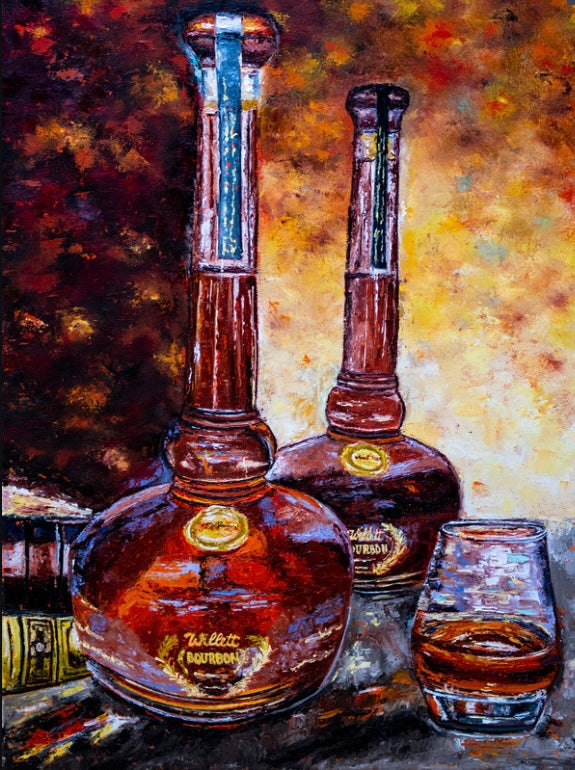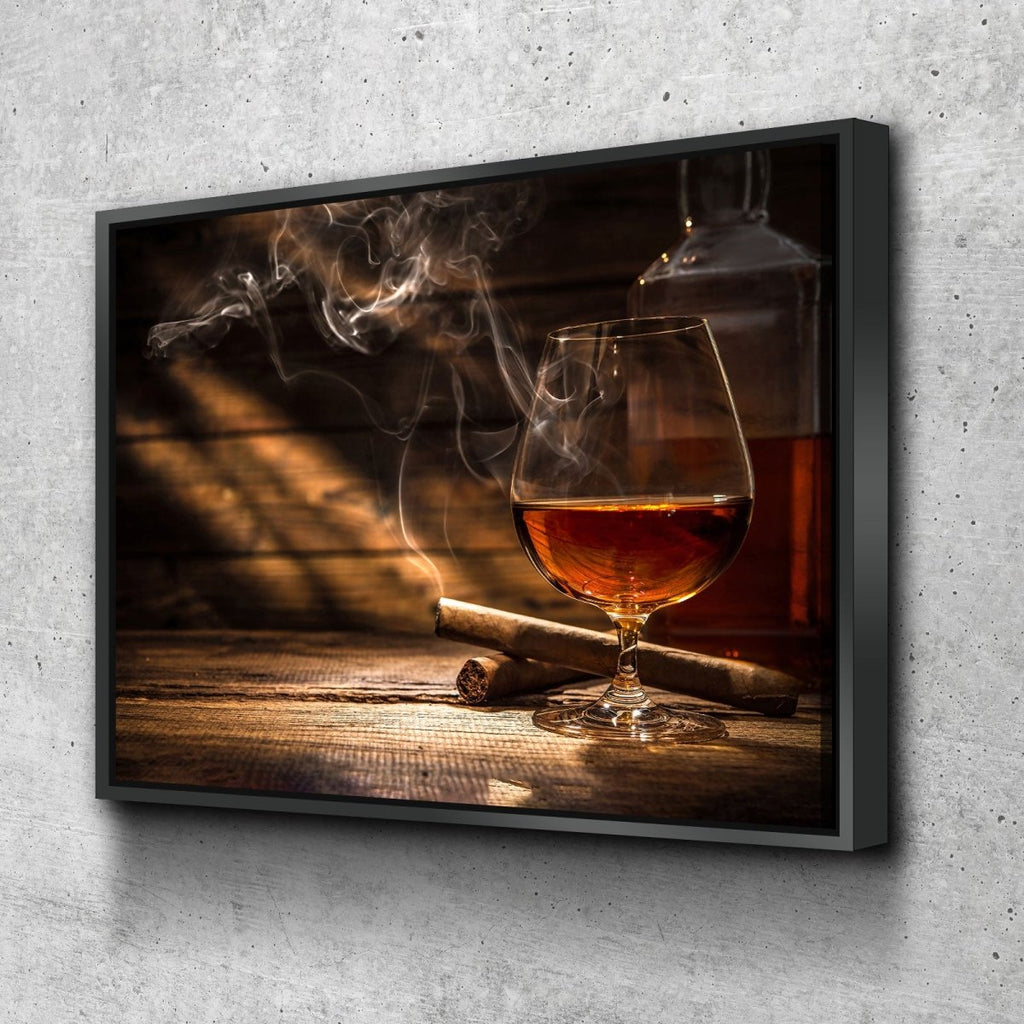Transform Your Area with Spectacular Whiskey Art Inspired by Nature
Transform Your Area with Spectacular Whiskey Art Inspired by Nature
Blog Article
The Significance of Whiskey Art in Celebrating Heritage and Workmanship in the Beverage Sector
The complex partnership in between scotch art and the event of heritage and craftsmanship within the beverage sector can not be overemphasized. Via attentively developed labels and bottles, scotch brands encapsulate their historic origins and the artisanal skills that define their production approaches. This imaginative dimension not only enhances market allure yet likewise functions as a conduit for social narration, promoting a deeper connection in between the craft and the consumer. As we discover the numerous aspects of this topic, intriguing inquiries regarding the impact of modern-day patterns on conventional practices emerge, triggering further exam.
The Historic Roots of Whiskey
At the heart of whiskey's appeal lies a rich tapestry of historic roots that map back to ancient civilizations. The origins of scotch can be connected to the distillation techniques of the Sumerians and Babylonians around 2000 BCE, where early types of fermented grain drinks began to arise. It was in the Middle Ages that the art of purification evolved considerably, specifically in Ireland and Scotland, leading to the creation of scotch as we understand it today.
The term "bourbon" itself stems from the Gaelic word "uisce beatha," implying "water of life." This expression emphasizes the cultural importance of scotch in Celtic cultures, where it was often connected with routines, parties, and public bonding. By the 15th century, distillation became an acknowledged craft within monastic neighborhoods, leading the way for the facility of lawful distilleries.
As trade routes expanded, scotch's popularity grew, transcending regional limits and catching the passion of aficionados worldwide. Realism Art. This historic trip mirrors not just the workmanship behind bourbon manufacturing yet additionally its indispensable duty in social and social contexts, noting it as a substantial drink throughout background
Artistic Expression in Branding
Scotch branding stands as a compelling crossway of creativity and commerce, where visual identification plays an essential role in shaping customer assumption. The visual appeals of whiskey tags, product packaging, and advertising and marketing products show not only the brand name's tale however likewise its core values and heritage. Via imaginative expression, distilleries communicate a narrative that resonates with customers, stimulating emotions and sparking links.
Making use of color, typography, and images in branding serves to distinguish products in a saturated market. Typical themes might evoke a feeling of authenticity and workmanship, while modern styles can signify advancement and forward-thinking. This strategic creative direction improves brand name recognition and commitment, allowing consumers to build a personal connection with the bourbon they choose.
In addition, artistic expression in branding commonly functions as an event of local heritage. Distilleries frequently integrate neighborhood symbols or historical referrals right into their designs, producing a local color that invites consumers to take part in a broader cultural experience. Eventually, the virtuosity behind scotch branding not only improves aesthetic allure but likewise improves the total narrative of the brand, promoting a much deeper admiration for the workmanship and heritage embedded in each bottle.
Craftsmanship in Bottle Style
The virtuosity noticeable in bourbon branding extends beyond visual identity to include the craftsmanship associated with container layout. Each container functions as a vessel not simply for the spirit within, yet additionally for the tale it outlines its high quality, custom, and origin. The style process requires meticulous attention to information, as components such as material, form, and closure add substantially to the general understanding of the whiskey.
Craftsmanship in container style includes selecting top quality glass that can enhance the bourbon's shade and clearness, while also providing a responsive experience for the consumer. The silhouette of the container need to be both cosmetically attractive and functional, often mirroring the heritage of the brand. Numerous distilleries go with special shapes or printed logo designs that evoke a feeling of authenticity and background.
Additionally, the label layout and typography play a vital function in communicating the brand name's narrative. Realism Art. A well-crafted bottle not just mesmerizes the consumer's eye however also enhances the brand's dedication to high quality and practice. This way, the workmanship of bottle layout ends up being an important facet of the scotch experience, combining artistry with an extensive respect for heritage
Social Significance of Scotch Art
Commemorating tradition and workmanship, the cultural relevance of bourbon art transcends plain appearances, intertwining with the social and historic narratives of the areas where it comes from. Each container works as a canvas, portraying the one-of-a-kind stories, folklore, and practices that have actually shaped regional whiskey-making techniques. The intricate styles usually reflect the heritage of the distillers, integrating icons and motifs that resonate with the culture and values of their areas.

Furthermore, scotch art plays an essential function in public events and parties, acting as a concrete link between individuals and their shared experiences. By appreciating the creativity in bourbon packaging, customers grow a deeper understanding and regard for the craft, inevitably enriching their satisfaction of the drink itself.
Modern Trends in Scotch Discussion
In recent times, the presentation of scotch has actually evolved to show modern preferences and trends while still honoring typical craftsmanship - Whiskey Art. Distilleries are significantly concentrating on aesthetic aspects that improve the total alcohol consumption experience, bridging the space in between heritage and modernity
Cutting-edge container designs have emerged, commonly including lasting materials and artistic labels that tell engaging tales. Several brand names now collaborate with regional artists, infusing their products with special aesthetic expressions that reverberate with customers. In addition, limited-edition launches are usually packaged in collectible containers, including worth and allure for connoisseurs.

Final Thought
Finally, whiskey art offers as an essential avenue for revealing the heritage and craftsmanship inherent in the beverage industry. Via detailed branding, innovative container styles, and culturally significant creative elements, scotch brand names effectively honor here their traditions and i thought about this attach with customers. This creative story not just elevates the gratitude of whiskey yet additionally reinforces community identity and satisfaction amongst manufacturers. Inevitably, bourbon art plays an important role in preserving and celebrating the rich cultural tapestry of whiskey-making.


Craftsmanship in bottle design entails picking high-grade glass that can boost the bourbon's shade and quality, while likewise giving a responsive experience for the consumer. In this method, the craftsmanship of container design comes to be an important facet of the bourbon experience, merging artistry with an extensive regard for heritage.
In final thought, bourbon art offers as an important avenue for sharing the heritage and craftsmanship inherent in the beverage market.
Report this page